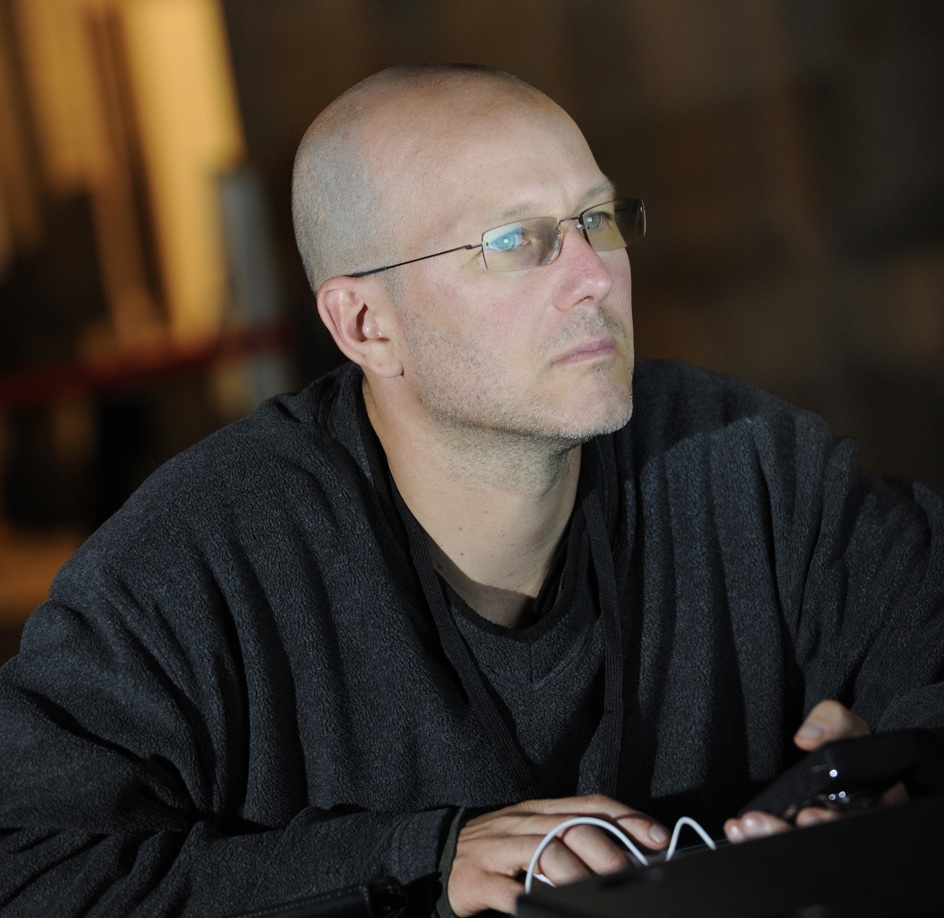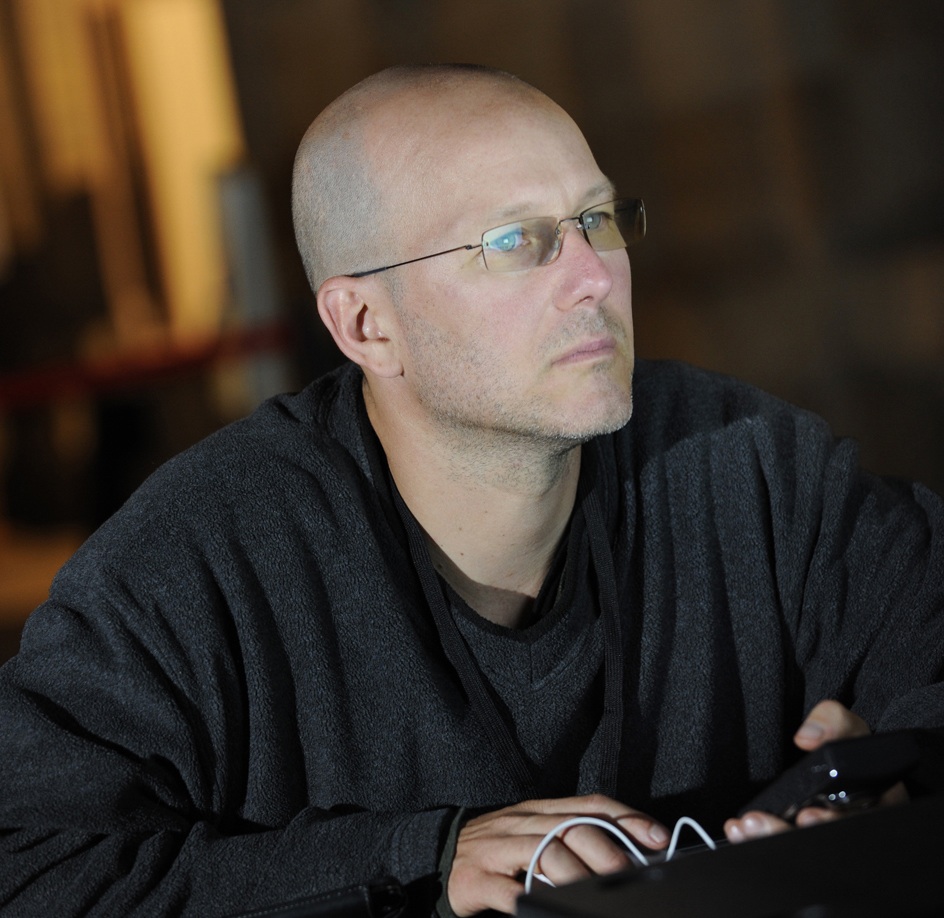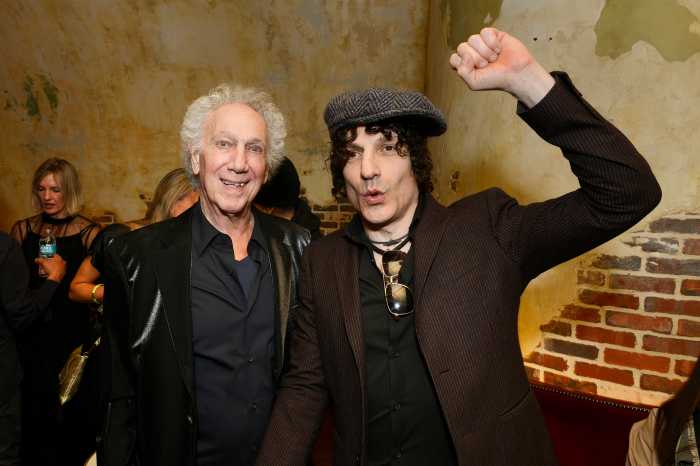BY TERESE LOEB KREUZER | Bill Morrison, 47, is a filmmaker whose methods are as unorthodox as his results. Old films are his raw materials. He re-edits them, slows them down and if they aren’t already grainy and decayed enough, he sees what he can do to make them more so.

For an early film, “Night Highway,” he said, “I played around with treating the film with Drain-O and some other solutions that would distress it. It was a kind of subtractive animation.”
Decay, death, mortality and evanescence are his subject matter and the way life slips away, leaving only fragments. “That’s a very accurate description of my work,” he said, “and how I view cinema. Cinema is fleeting. You don’t hold on to it. You have your recollection of images and sounds and emotions when you saw the films. I make an analogy between films and life as we live it.”
Morrison collaborates with contemporary composers to create his films, which have no dialogue or script in the conventional sense.
Thanks to WNYC’s John Schaefer and to Arts Brookfield at the World Financial Center, audiences have a chance to view four Morrison films in a festival running through Feb. 3 at the Winter Garden. On two of the festival’s four nights, the films are being accompanied by a live orchestra. These screenings will be followed by additional screenings at the Film Forum on West Houston Street from Feb. 8 to Feb. 14.
Though eight of Morrison’s films are in the permanent collection of the Museum of Modern Art, he said that the Winter Garden festival is “an important event for me! To have live orchestras performing to my films and to have four features of mine in a public space and promoted by a radio program that I really value – it’s a great honor. In terms of Film Forum, I don’t get too many theatrical runs. My films show all around the world but not every day in my hometown.”
Morrison said that his interest in distressed film footage came out of his background in painting, which he studied at Cooper Union. “I was interested in the plastic qualities of cinema,” he said. “At school I would shoot rolls of film and then print frames on photographic paper and reanimate those photographs.”
“Film for Her,” which he made in 1996, was a breakthrough. The 12-minute-long film was about making films from old images. ”It tells the story of a guy who made sure that the early collection of film was not thrown away when they were cleaning out the Library of Congress,” said Morrison. “He wasn’t a film guy. He was a clerk.”
“Film for Her” was screened at a hundred film festivals and became Morrison’s calling card so that he could make longer and more mature work. It will be among the Morrison films shown at Film Forum.
“’Decasia,’ without question, would be my second break-through film,” he said. It was released in 2002 and was Morrison’s first feature. “It got a lot of press,” he recalled. “Both the film and the music taken as a pair were considered an event. Michael Gordon, one of the founders of Bang on a Can, wrote the music.”
“’Decasia’ was the first film where I took on this notion of decaying film and made it really the subject matter of the work and not just an interesting visual element,” Morrison said. “I tried to find work where the imagery showed a person struggling with something, either physical or spiritual and meanwhile the world is actually pulled out from under them.”
Morrison’s films are difficult to make because of the volatility of his raw materials. “The old films were on nitrate cellulose,” he said. “It’s an incredibly flammable material. It’s the same material that makes up explosives and gunpowder. Entire warehouses were blown up and entire collections were lost.”
The film can’t leave a nitrate-insured facility. “That means that to the degree I can look at it in its original form I have to go somewhere and get clearance and put on gloves and a mask,” Morrison explained. “It can’t be projected. Only FedEx can ship these things and only certain labs will handle them. Making copies can be expensive. Not only will they burst into flames, but more commonly, they will just stick together and become solid masses of nitrate. They call it hockey puck or a doughnut. It’s very difficult material. The thing that makes it so beautiful for me is the way it decays but also it held so much more silver content in the emulsion so you have more definition in these old films.”
On the first night of the Morrison film festival at the World Financial Center, “The Miners’ Hymns” was shown, depicting the harsh, tragic lives of miners in Durham, England with a score by Icelandic composer Johann Johannsson performed by the 22-piece Wordless Music Orchestra.
Also to be screened are “The Great Flood” on Feb. 1, “Spark of Being” on Feb. 2 and “Decasia” on Feb. 3, whose haunting score will be performed by the 55-piece Oberlin Contemporary Music




































